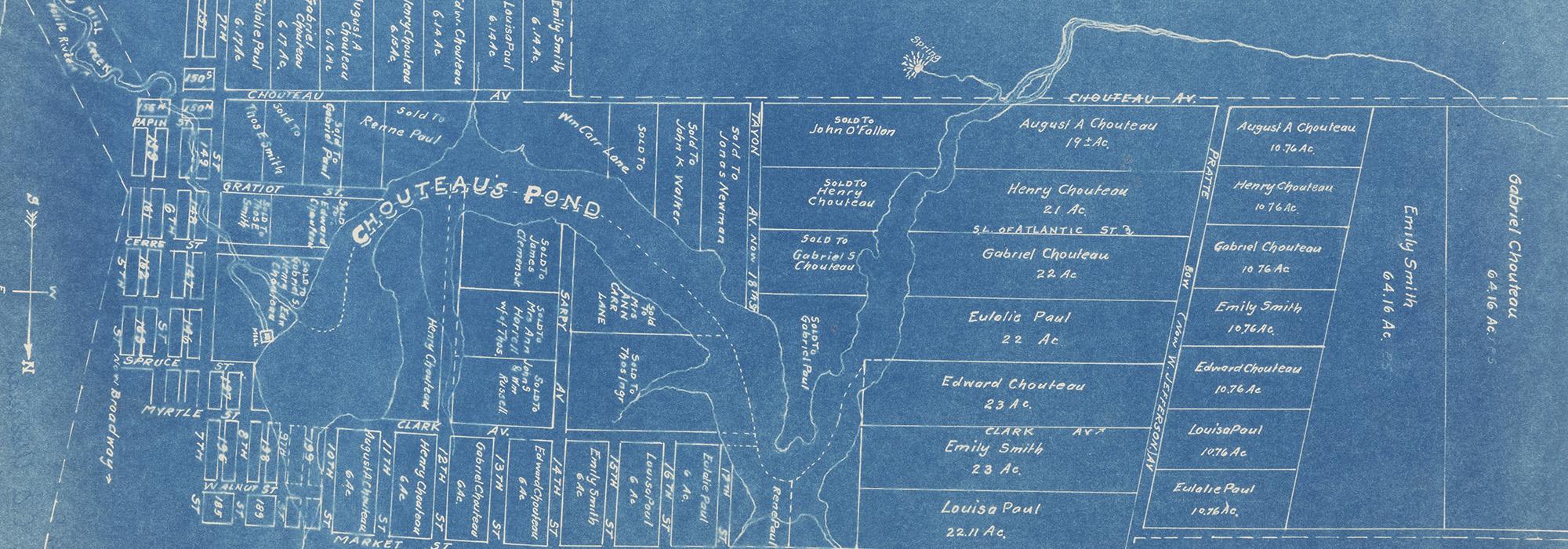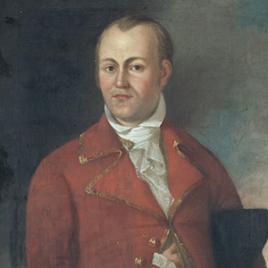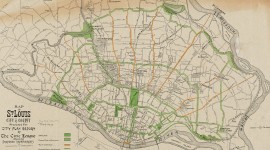Pioneer Information
Raised in the French colony of New Orleans, Chouteau lived with his mother and was estranged from his birth father. In 1757, his mother began a relationship with fur trader Pierre Laclède Liguest, who six years later moved with Auguste to the Illinois territory to establish a trading post. At only fourteen years old, Chouteau commanded a band of 30 men and oversaw the development of a village along the Mississippi River’s west bank, near its confluence with the Missouri River. Laclède named the settlement St. Louis. Chouteau implemented St. Louis’ first city plan, modeled after that of his native New Orleans, with a grid of streets moving westward from a marketplace near the river. After Laclède’s partnership with trader Antoine Maxent was dissolved in 1769, Chouteau became a partner in the fur trading business.
Following Laclède’s death in 1778, Chouteau assumed control of the business, eventually expanding into banking following the decline of the fur trade. After the Louisiana Purchase of 1803 ceded the territory including St. Louis to the United States, Chouteau was appointed one of the first justices of the territorial court, and later served as president of the St. Louis board of trustees and colonel of the St. Louis militia. At his death in 1829, he was the largest landowner and wealthiest citizen in St. Louis. Remnants of the original city street grid laid out by Laclède and Chouteau are extant along the west bank of the Mississippi, now preserved as Laclede’s Landing Historic District, listed in the National Register of Historic Places in 1976.








